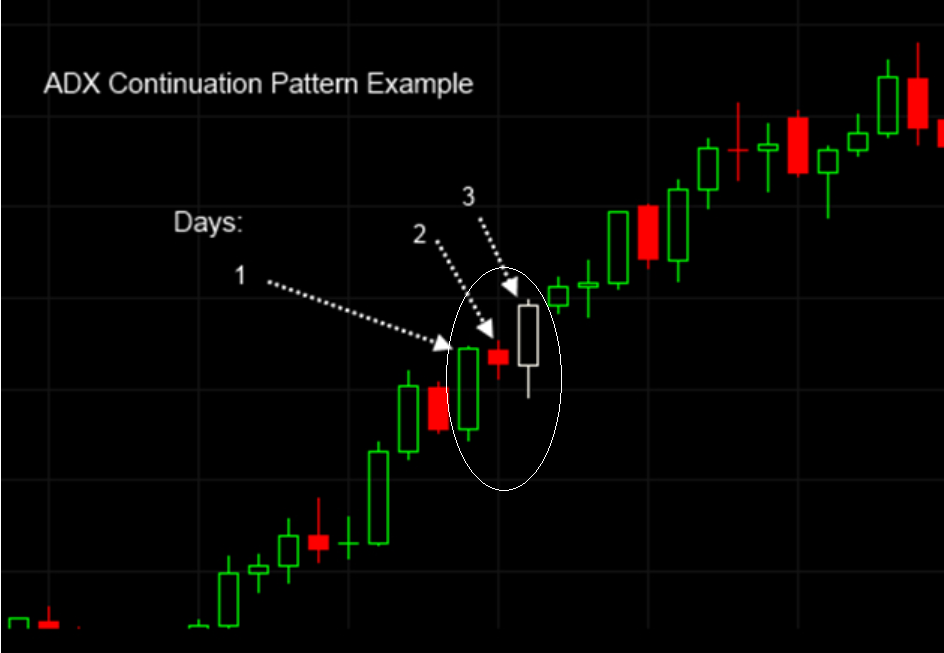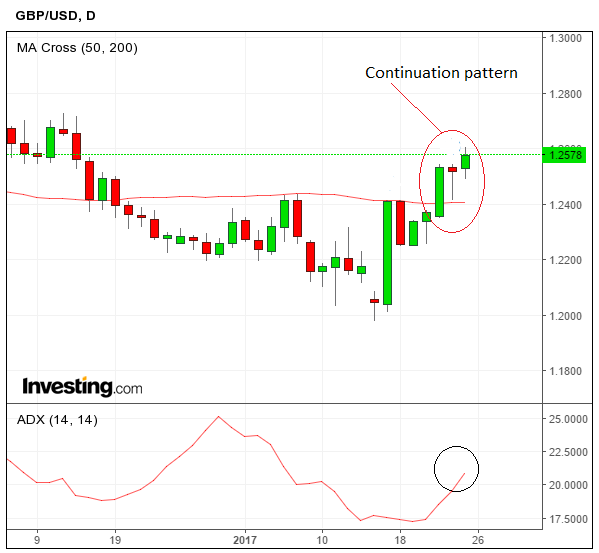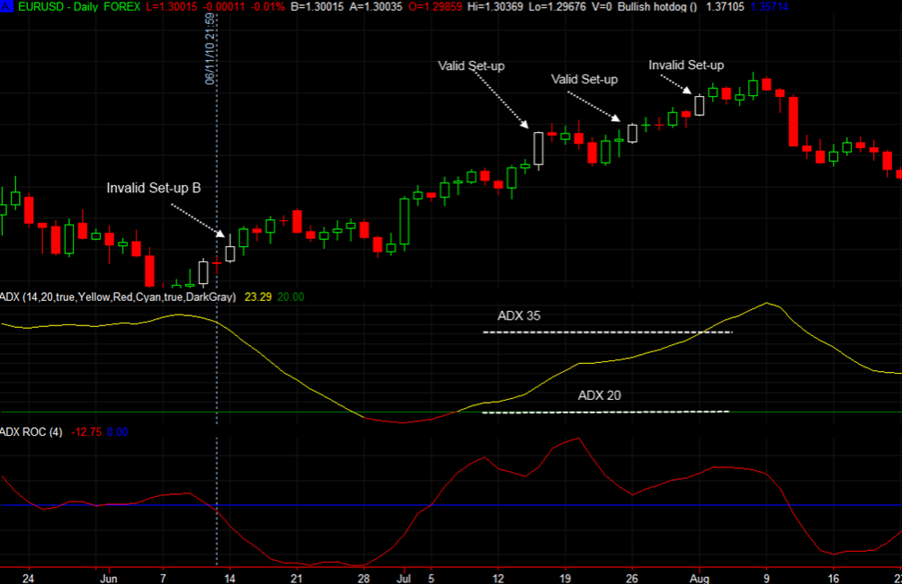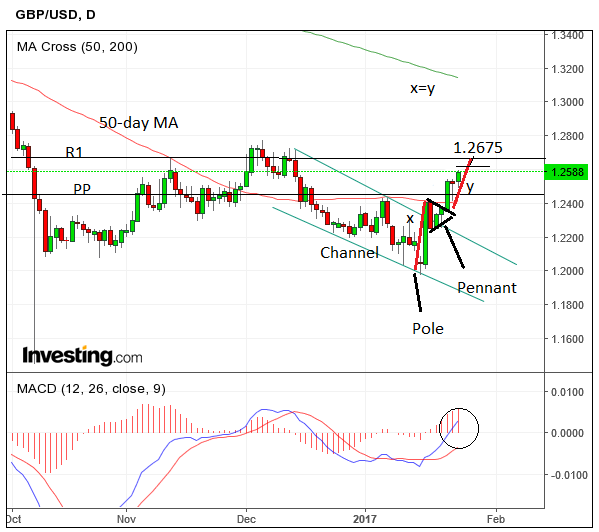The GBP/USD Rate: 'High-Probability Pattern' Confirms Outlook Remains Positive
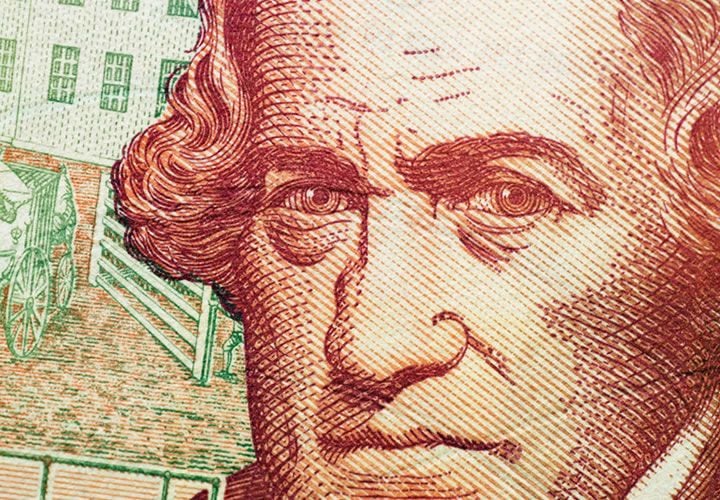
The Pound is the best performing currency in the G10 complex this week with GBP/USD breaking above the 1.2575 resistance line and rallied to 1.2663 for the first time since mid-December.
The pair is up 2.74% on the month, 3.51% on the quarter and 2.31% up this year.
And more gains are likely before the recovery move settles.
"Traders now look at 1.2774 (Dec 5th high), as the 200-day moving average is less than 3 figures away, 1.2900," says Ipek Ozkardeskaya at London Capital Group.
We note the exchange rate is in the process of forming what could be a high-probability continuation pattern which could signal more upside into the 1.27s.
We wrote that for it to be valid the exchange rate must close above 1.2589 at midnight GMT on January 25 - and it did.
This indicates a high (>80%) probability of an extension of 150 points up to 1.2757.
Below is an example of the bullish continuation pattern - which is called the "ADX Continuation Strategy" which is composed of three days of activity the second day of which is much narrower than the first and third, which are stronger up days.
A similar pattern is forming on GBP/USD.
The final criteria for eligibility is that the ADX indicator, which measures how strongly trending the market is must be above 20 but below 35, and it must have been rising over the last 4 days.
The example on the GBP/USD meets all these criteria as ADX is reading 21 and has been rising.
Looking at the chart more generally, we see that the pair has successfully broken above both the 50 and 100-day MAs – which is a very bullish sign - and is continuing to push higher.
Prior to the break higher the pair formed what looks like a pennant pattern, which is a small triangular consolidation (the pennant) atop a steep rise (its pole).
The pattern gets its name from the pennants which flew from the tops of castles in days of yore.
Pennants are a bullish sign in a rising market and this one suggested a break higher, which is in the end what has happened.
There is a way of measuring how high a pennant will go and this is by extrapolating the height of the pole higher from the point of the breakout.
On the chart below the pole is labelled “x” and the length of the break higher after the pennant “y”, the expected target, therefore, is the level at which x=y.
Such a level is calculated to be at 1.2685, however, we have lowered the target slightly to 1.2675 for the sake of safety, so that it is below tough resistance from the R1 monthly pivot at 1.2682.
Note the strength of bullish momentum as measured by the MACD, which has risen above the zero-line indicating the trend is now bullish.
Watch Upcoming Barriers
Readers should keep in mind that Sterling is approaching some key resistance points which could hamper gains.
“Sterling continues to surprise the market with its resilience, coming back strongly since its lows set in Asia on Sunday 16th January, but we are starting to approach the other side of the current ranges in terms of GBPUSD and EURGBP,” says Robin Wilkin at Lloyds Bank Commercial Banking.
“We still see the 1.28-1.30 region as key and while under here we still look for a broader medium-term range to develop further,” says Wilkin.
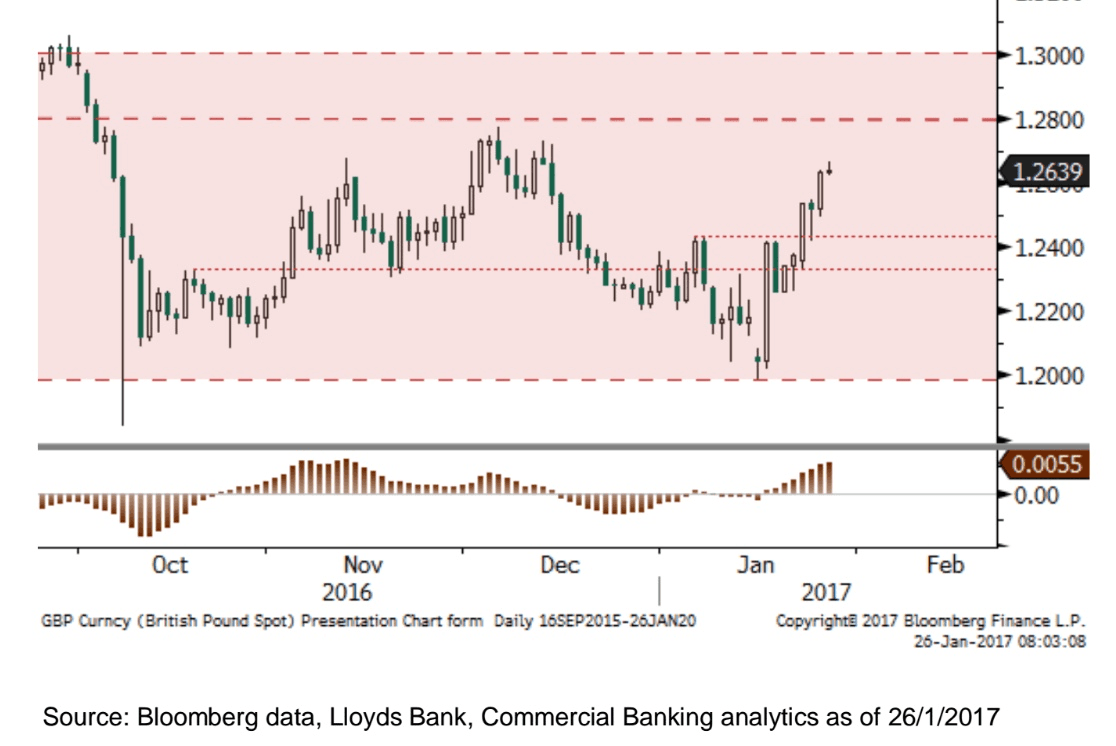
UK GDP Data Beats Expectations
On the data front, the most recent news has been supportive for the UK currency.
GDP data for the fourth quarter 2016 showed growth of 0.6% - equalling the growth for the third quarter. This is ahead of analyst expectations for growth of 0.5% to be announced.
In fact the UK economy grew faster in the six months following the Brexit vote than it did in the six months preceeding the vote.
Annualised GDP reads at 2.2% confirming the UK as one of the fastest-growing major economies in the world.
"Strong consumer spending supported the expansion of the dominant services sector and although manufacturing bounced back from a weaker third quarter, both it and construction remained broadly unchanged over the year as a whole,” says ONS Head of GDP, Darren Morgan.
From a currency perspective, the beat on expectations should solidify the Pound’s recent relief rally and potentially take us to the near-term targets we have set out.

